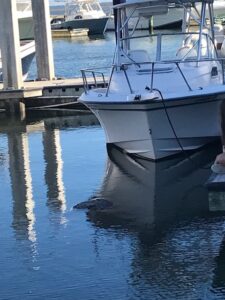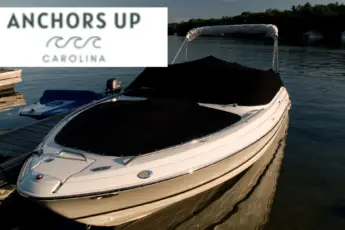Boaters approach docks daily but often fail to realize the subtle differences, especially if the boat is trailered. I have spent thousands of hours on watercraft ranging in size from small inflatables to large yachts. During that time, I have secured boats to hundreds of docks scattered across the United States, Bahamas, and the Caribbean. Therefore, I know the differences between a floating dock vs fixed dock. Here are 5 differences between the two types of docks.
What Is The Primary Purpose Of A Dock
Indeed understanding the purpose of a dock is elementary however, they serve many purposes. Of course, the most obvious is a location to secure vessels when not in operation. In this situation, the vessel remains in the water as compared to being hauled by a trailer, forklift, or other.
However, a dock still factors into the equation when being hauled. For example, the watercraft secures at a dock before being loaded and hauled out.
Commercially, docks secure ships to load or unload passengers and similarly to load or unload freight. Most often, ships are secured to docks only as long as it takes to complete the required task.
Lastly, some docks are intended for something other than watercraft. Plenty of docks in lakes, coastal regions, or creeks and rivers are designed solely for people. The dock allows people access to the water to fish, swim, or simply have a view.
5 Differences Between A Floating Dock Vs Fixed Dock
While floating docks and fixed docks serve the same purpose, they are significantly different. Here are five differences between a floating dock vs fixed dock.
Tides
Lake and freshwater river boaters will have no trouble navigating docks because it is not affected by tides. However, saltwater is a different story.
Tides are the number one reason why floating docks are installed compared to fixed docks. A floating dock rises and falls with tides because it rides up and down on concrete pilings.
Fixed docks remain in position; therefore, as the tide falls, the distance between the surface of the dock and the water becomes significant. Comparatively, the floating dock remains at the same height from the water no matter the tide.
Construction
Depending on the purpose of use, docks are primarily built from concrete, wood, or artificial lumber.
I have seen numerous concrete fixed docks and wood fixed docks. Conversely, it is rare to find wood floating docks.
You might ask how would a concrete dock float? Beneath the concrete is expanded polystyrene or EPS. EPS has no trouble supporting the weight of a concrete dock to keep it afloat.
Fixed docks, are a combination of concrete or wood pilings and a concrete deck or wood deck. In most cases, wood pilings are driven into the seabed and act as the initial frame for the dock’s surface and railings.
When it comes to floating docks, the buoyant foam remains hidden beneath the walkable surface. Consider a floating dock, a frame with a walkable surface on the top, and foam secured beneath.
Weather
No matter if you’re boating on lakes, rivers, or coastal waters, weather can be unpredictable and tumultuous.
When comparing a floating dock to a fixed dock, floating docks fair superior in extreme weather. When referring to extreme weather, I am specifically talking about tropical storms and hurricanes.
Remember, floating docks ride the tide. Tropical storms and hurricane-force winds create massive waves and storm surges. Rather than remaining fixed, the floating dock rides the extreme water level changes similarly to waves. In comparison, the fixed dock is subject to losing deck boards from both wind and waves as it cannot move.
Securing The Vessel
A fixed dock presents multiple problems to boaters. Not only is the dock elevated but dock lines need frequent adjustment. All too often, an unfamiliar boater finds the boat hanging by dock lines as the water level has fallen. Alternatively, this is not an issue whatsoever with floating docks. The watercraft rises and falls at the same rate as the floating dock.
One draw back to the floating dock versus the fixed dock is motion. When securing the vessel, the dock will shift as boats and waves impact the structure. The motion causes discomfort to some and puts people at risk of losing footing.
Dock Access
Despite not being involved in boating, the vast majority of people have stepped onto a dock. However, most fail to recognize the differences between entering a fixed dock versus a floating dock.
Fixed docks are precisely as they sound, fixed into one position. Therefore, the transition from land to the dock is most frequently level. Consequently, you will not need to adjust your elevation from the water with the exception of boarding a vessel.
Conversely, entering a floating dock is significantly different. Keep in mind that most floating docks are connected to a fixed dock which I would consider to be more of a pier. The reason is the challenge of building a fluctuating ramp directly from the land.
Depending on the location of the floating dock, the incline from the fixed dock to the floating portion will range from significantly pitched to slightly pitched, depending on the tide. Use caution when climbing up or down. You are at risk of slipping or losing control of dock carts. The ramp is more inclined at low tide versus high tide.
Conclusion: Differences Between A Floating Dock Vs Fixed Dock
I personally do not intend to build a dock; therefore, understanding what it best in your situation is critical. Most of us enjoy docks for a stroll or securing a vessel. However, if you’re in the market for a dock I recommend consulting a dock builder near you. The next time you’re at the marina, take a close look and determine if the dock is floating or fixed.






